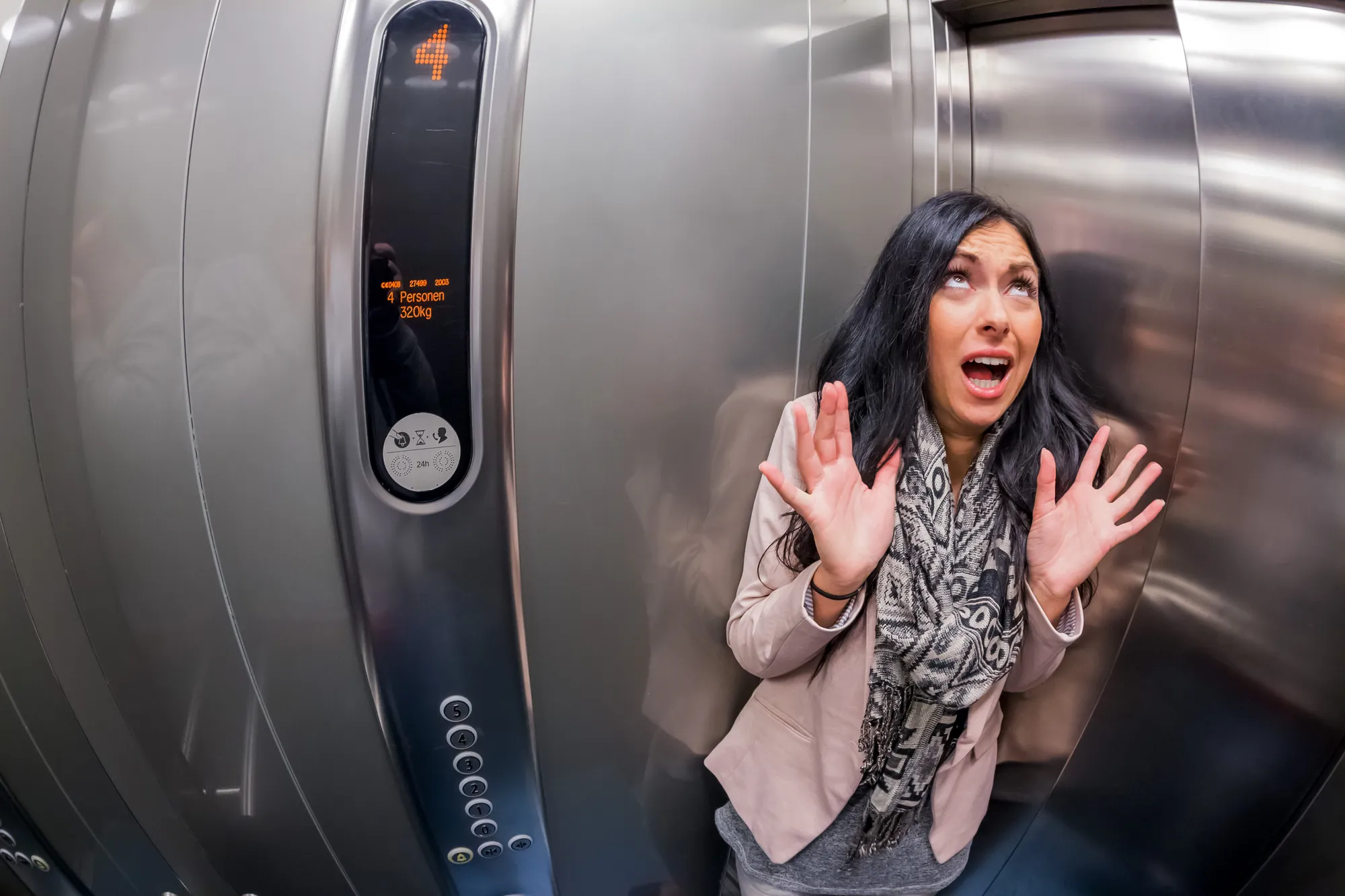
Phobia is a common anxiety disorder in which a specific situation or a specific object triggers extreme anxiety. The level of anxiety experienced is usually extreme and excessive as compared to the actual danger involved in the situation. Sometimes even talking or reading about the situation or the object can trigger anxiety.
While it is quite usual for people to dislike certain situations or objects, to be considered a phobia, the fear must be extreme enough to interfere with daily life. For example, many people are uncomfortable in small closed spaces like lifts. But there are some who will refuse to go to a place if using a lift is unavoidable, in spite of knowing that they are losing out by not being there.
via GIPHY
We spoke to Dr. Preeti Parakh, MD Psychiatry, Psychiatrist & Head, Mpower the Centre, Kolkata to understand more about phobias, triggers, and why people avoid them. Here’s what she said:
Types Of Phobias
Agoraphobia is a fear of being in crowded places or places from which escape may be difficult. It can be so debilitating that some people are unable to even leave their homes. However, most agoraphobics manage to go wherever needed if they are accompanied by someone. Fear of lifts is also common in people with agoraphobia. People with social phobia avoid being in social situations. Claustrophobia is a fear of being in tightly enclosed spaces like lifts. Acrophobia is the fear of heights. Arachnophobia is the fear of spiders. These are only a few examples and there are many other types of phobia.
via GIPHY
Reasons Behind Developing Phobias
Often a past traumatic experience can explain the phobia. It might also be a learned behavior from what one has seen happening with others. Significant long-term stress can also make people vulnerable to anxiety disorders like phobia. There also are genetic factors that increase the likelihood of developing it. Whatever be the cause and the trigger, avoidance of the offending situation or object is common to all types of phobia.
via GIPHY
How People React To Phobias
People with a phobia have a plethora of reactions when they are exposed to the triggering situations and objects. There might be palpitations, choking, sweating, tremors, numbness and tingling in limbs, cold clammy limbs, breathlessness, chest pain, bloating, nausea, etc. Some people feel as if they are dying. If the anxiety is severe, there might be panic attacks. The overall experience is so unpleasant that people have no option but to avoid the situations and objects that act as triggers in order to prevent the ensuing anxiety.
via GIPHY
Avoiding Triggers
Avoiding triggers does provide short-term relief but may not always be possible or practical. There are other treatment modalities that can provide better results. Medicines that increase serotonin levels in the brain are effective in treating phobia and other anxiety disorders. Anxiolytics like benzodiazepines provide immediate but short-lived relief and are used on an as and when required basis. Relaxation techniques like deep breathing can help fight anxiety. Therapies like systematic desensitization can be used alone or in conjunction with medicines.
via GIPHY
What Is Systematic Desensitisation?
Systematic desensitization involves combining relaxation techniques with graded exposure to the trigger. It involves three major steps. First, one has to learn relaxation exercises like progressive muscular relaxation, visualization, deep breathing, meditation, etc. Relaxation exercises are important because it is not possible to be tense and anxious when one is relaxed.
The second step requires preparing a hierarchy of triggers, from the most frightening to the least frightening. For example, someone with a phobia of snakes may find thinking about a snake the least anxiety-provoking, followed by seeing a picture of a snake, then seeing a snake, and lastly, actually touching a snake. This list is very important as the next step requires graded exposure to the triggers, starting with the least frightening ones and moving up the list gradually. At each level of the list, after the exposure leads to anxiety, relaxation techniques should be used to reach a state of calm. The exercise needs to be repeated till a particular level in the list is no longer anxiety-provoking and does not need to be avoided. Gradual and repeated exposures help one feel more in control of the disorder and the relaxation exercises help one respond to triggers in a different manner.
via GIPHY
Other Therapies
Virtual reality exposure therapy is also becoming quite popular these days. Here computer-simulated virtual environments are used to provide exposure to triggers. It allows the individual to face the trigger in a safe environment while allowing the therapist to control the intensity and the duration of the exposure.
For people who do not have access to a therapist, it is possible to do exposure therapy on your own. Although it may take months to overcome the most frightening trigger, the results are long-lasting and life-altering. Rather than living with phobia by just avoiding the triggers, professional help should be sought and all possible efforts should be made to treat it.







